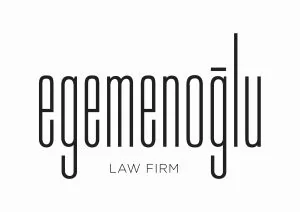- within Real Estate and Construction, Transport, Food, Drugs, Healthcare and Life Sciences topic(s)
A lease agreement is regulated in the Turkish Code of Obligations No. 6098. It is a contract wherein the lessor agrees to give the lessor the use of a property or the benefit of the property as well as the general use in exchange for the lessor paying the agreed-upon rent. A lease agreement can be made for a definite or indefinite period of time.
In practice, leases for a period of 1 year or more that involves more than one vehicle are called "long-term leases" and/or "fleet leases". The issue of using the vehicle for the duration of time agreed upon between the lessor and the individuals wishing to rent a vehicle is covered by the lease agreement within the scope of Turkish Code of Obligations No. 6098 and in accordance with the principle of contract freedom.
The Law No. 6361 on Financial Leasing, Factoring, Financing and Savings Financing Companies includes regulations on "Financial Leasing". Accordingly, "The transfer of ownership of a property to the lessee at the end of the lease term for financing provided by the lessor authorized in accordance with the Law or the relevant legislation, provided that it is based on financial leasing contract; granting the lessee the right to purchase the property at a price lower than the current market value at the end of the lease term; It refers to any of the cases where the lease term covers more than eighty percent of the economic life of the property or the sum of the present values of the lease payments to be made according to the financial leasing contract that constitutes a value greater than ninety percent of the fair value of the property".
With the Law No. 4842, recurrent Article 290, titled "Valuation in Financial Leasing Transactions," was introduced to Tax Procedure Law No. 213 ("Law") and the third paragraph of that article covers the topic of this article.
In this context, Law No. 6361 and Law No. 213 have introduced regulations independently from one another. With the regulation introduced in the Tax Procedure Law with Law No. 4842, no reference was made to the Financial Leasing Law No. 3226.Therefore, a leasing transaction made within the scope of the Financial Leasing Law will not be considered as a financial lease in terms of tax applications if, as a result of the examination, the lease transaction is not be considered as a financial lease pursuant to the provisions of this article or on the contrary, in terms of tax applications, a leasing transaction that is not undertaken in accordance with the Financial Leasing Law will be regarded as a financial lease if it is determined after examination that it satisfies the requirements of a financial lease as set forth in this article.
The following is the third paragraph of recurrent Article 290, titled "Valuation in Financial Leasing Transactions," of Tax Procedure Law No. 213: "...3. The following definitions are taken into account in the application of this article. Financial leasing refers to leases that transmit to the lessee all risks and rewards associated with holding a financial asset, regardless of whether the lessee retains ownership at the conclusion of the lease term. Ownership of the economic asset is transferred to the lessee at the end of the lease term, and the lessee is given the right to purchase the economic asset at a price lower than the current value at the end of the lease term if certain conditions are met. If the lease term covers more than 80% of the economic life of the asset or the sum of the present values of the lease payments to be made according to the contract constitutes a value greater than 90% of the current value of the asset, the lease is considered a financial lease..."
The "Communiqué on Tax Procedure Law No. 319 ("Communiqué")" has gone into effect in order to provide guidance for the application of the recurrent article 290. The definitions in paragraph 3 of the recurrent article 290 are explained in the following manner with regards to its application:
Financial Leasing; these leases result in the transfer of all or almost all of the risks and benefits associated with ownership of an economic asset to the lessee in exchange for a fee, regardless of whether the ownership right is transferred to the lessee at the conclusion of the lease period. All agreements should be assessed collectively when there are several contracts, additions, amendments, and other contracts with the same economic asset.
Leases that meet one or more of the following criteria will be considered as financial leasing:
- Transfer of ownership of the economic asset to the lessee at the end of the lease term: This implies the existence of a clause in the lease that allows for the transfer of the economic asset to the lessee or the existence of a put option that the lessee will almost certainly exercise.
- Providing the lessee a choice to purchase the economic asset at a significantly lower price than its current market value at the end of the lease term: It is difficult to determine the exact value of the economic asset at the beginning of the lease period for the conclusion of the lease term.. Inflation, asset depreciation, and other factors are typically taken into consideration when determining the fair value of the economic asset at the end of the lease term. It describes the situation in which it is highly probable that the lessee will exercise his/her right to purchase at the end of the lease term. For instance, firm X leases to company Y for a period of five years an economic asset that it currently possesses and a current value of TRY 50 billion. Taking into account inflation and depreciation since the beginning of the contract, let's say that the expected value of the economic asset at the end of the contract is TRY 5 billion. Less Y has the choice to purchase the economic asset for 1 billion liras or less at the end of the five-year lease term. In this instance, it is evident that the lessor company will make use of the right to acquire at the end of the lease period.
- The lease term covers more than 80% of the economic life of the economic asset: The economic life is the period in which a financial asset can be utilized economically or a specific volume of production is estimated to be obtained. For instance, if the economic life of the asset is 10 years and the lease term is 9, the lease will be a financial lease since the lease period exceeds 80% of the economic life. If the lessee has the right to use a significant portion of the economic life of the economic asset, 80% or more, at the same time, he/she obtains a significant portion of the economic benefit of the economic asset and is also exposed to its risks. The initial years will bring in more economic advantages than the last years, which can be considered when evaluating the economic life ratio of particular economic assets.
- In line with the agreement, the total present value of the lease payments is greater than 90% of the economic asset's current value: A lease is considered to be a financial lease if the total present value of the lease payments, as assessed by the 5th and 6th paragraphs below, exceeds 90% of the economic asset's current value. For instance, if the current value of the economic asset is TRY 50 billion at the beginning of the lease and the sum of the present value of the lease payments is TRY 49 billion, this is a financial lease. Because TRY 49 billion is larger than TRY 45 billion, which is 90% of TRY 50 billion.
Lease Duration: It is the non-cancellable time frame laid out in the contract during which the lessee is leasing the economic asset. However, the lessee is given the right to extend the lease duration at the start of the lease, and if it is certain or almost certain that he/she will exercise this option, the additional period is also included in the lease period. For instance, since it is obvious that the lessor will exercise his/her right of use, the periods in this situation should be evaluated within the lease period if the lease price in the extension is very low compared to the current value or if the lease is not renewed, a very high penalty amount that the lessor will have to pay is determined.
Beginning of the lease: Is the earliest of the dates that the contract is made or that one of the parties makes a significant commitment to one of the key contract provisions. For instance, if the lessor begins preparing the economic asset for use before the contract is finalized, the beginning of the lease is not the date specified in the contract as being later, but rather the beginning date of the preparation activity.
As a result, within the context of leases where the vehicle is not transferred to the lessee at the end of the lease period and where the lessee is not offered the choice to purchase the vehicle at a discount from its current value, in accordance with the guidelines and principles outlined in the Communiqué, a vehicle with a 48-month lease term and a useful life of five years may be leased. The lease period must be at least 80% of the economic life of the economic asset or it is a practice-supported opinion that the contract in question will be regarded as a financial lease within the meaning of Restated Article 290 of the Law in cases where the total present value of the lease payments to be made in accordance with the contract represents a value greater than 90% of the vehicle's current value. Another perspective is that this period may extend up to 96 months.
In conclusion, the above tax law regulations are closely related to companies that offer fleet lease services. Given that long-term leasing can be regarded as financial leasing, the fact that financial professionals have varied opinions about the different aspects of the regulation suggests that leasing businesses should review the matter delicately.
The content of this article is intended to provide a general guide to the subject matter. Specialist advice should be sought about your specific circumstances.


